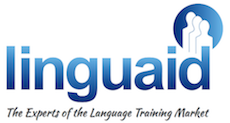What should your language school website be doing?
3 areas where you can bring in more learners
If you run a language school, I’d bet easy money that you have a web site. I’d also bet that you’re wondering how to:
- Increase traffic to your website,
- Get more people to contact you when their on it,
- Convert those people into clients.
And if you run a local language school that caters both to the general public and to companies, then you’re probably also thinking about two categories of visitors: potential language learners, and potential decision-making clients (for example human resources managers or learning officers).
Running a web site is both very simple and incredibly complex at the same time. I’ve been involved in creating multilingual websites for language schools where a huge team including a project manager, a specialised expert per target country, a designer, a photographer, a translator, an SEO (Search Engine Optimisation) consultant and 3 writers were involved. And I’ve also been involved in small intimate projects where the budget is tiny and the ambition lofty. What joins these projects together are still the three needs listed above.
What type of language school site do you have at the moment
So how does this translate into implementing a successful website for you?
First of all, you have to decide whether your website is one of 3 categories:
- a presentation of your activities
- a place to attract new learners and clients
- a platform to deal with reservations and inscriptions (like an e-commerce site)
Of course, these options are not mutually exclusive, you can have all three.
Unfortunately, the vast majority of websites for language schools and independent language teachers are stuck in the first category, when ideally they’d like to be doing the second thing a lot more.
So what can you do to make your website more attractive to new learners and clients? This is assuming that they’ve found your website (see an upcoming post on “what can Google do for your language school?” soon).
Keep your site regularly updated
I’d say that the number one requirement is to make your site, and consequently you and your school, are “alive”. This means showing the visitor that things are happening of which they could potentially be a part. How you do this can be very varied, but here are a few examples:
- Excerpts of your Twitter account,
- News,
- Blog,
- Testimonials (with dates),
- Excerpts of your Facebook / Google Plus page.
These are just a few, but the choices are getting larger and larger. What is even more interesting, is that you shouldn’t be doing this just for your visitor, but also for your friend Google and other search engines, who visit your web site regularly. And if they see you’re regularly updating, they’ll come back even more. And the more they visit you to see what’s going on, the higher your ranking, and in turn, the higher your traffic.
Put in a strong “magnet”
The second requisite is your “magnet”. You’ve managed to get them on your website, which is already a feat in itself, but now what are you going to do for them? Unless their need is so desperate, and your offer so far removed from your competition that they have no choice (for example you’re the only school to offer Russian classes in your city) then you have to give them something to set you apart and make them want to contact you. The best magnets are so strong that they are prepared to fill in a form and so you get their contact details to follow up afterwards. Here are a few ideas of typical magnets for language schools:
- Free English / French (etc.) test,
- Free intercultural quiz,
- Free elearning exercise,
- Free language game,
- Free white paper,
- Free video on “how to…”.
Add a powerful Call for Action
The third requisite is a strong “call for action”. This is essentially what you want your visitor to do. Because people are so used to the Internet now and being bombarded with sales messages, they tend to get very suspicious and so won’t do anything until they’re told to do so. Assuming they’ve enjoyed their visit due to your magnet, then they’re a lot likely to contact you.
No one knows anything – keep testing!!
Lastly, and this is a universal truth: when it comes to web sites for language schools “no one knows anything”. You can’t just develop a web site, put it into place and think that people will start contacting you. It takes time, and testing. Sometimes the behaviour of your visitors will surprise you.
I hope you’ve enjoyed this article. Please feel free to leave any comments.
Click here to get more leads for your language school.






Leave a Reply
Want to join the discussion?Feel free to contribute!